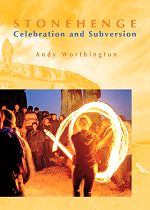<< Text Pages >> Cara Blanca - Natural Stone / Erratic / Other Natural Feature in Belize
Submitted by bat400 on Thursday, 13 January 2011 Page Views: 15620
Natural PlacesSite Name: Cara BlancaCountry: Belize Type: Natural Stone / Erratic / Other Natural Feature
Nearest Town: Orange Walk
Latitude: 17.417000N Longitude: 88.867W
Condition:
| 5 | Perfect |
| 4 | Almost Perfect |
| 3 | Reasonable but with some damage |
| 2 | Ruined but still recognisable as an ancient site |
| 1 | Pretty much destroyed, possibly visible as crop marks |
| 0 | No data. |
| -1 | Completely destroyed |
| 5 | Superb |
| 4 | Good |
| 3 | Ordinary |
| 2 | Not Good |
| 1 | Awful |
| 0 | No data. |
| 5 | Can be driven to, probably with disabled access |
| 4 | Short walk on a footpath |
| 3 | Requiring a bit more of a walk |
| 2 | A long walk |
| 1 | In the middle of nowhere, a nightmare to find |
| 0 | No data. |
| 5 | co-ordinates taken by GPS or official recorded co-ordinates |
| 4 | co-ordinates scaled from a detailed map |
| 3 | co-ordinates scaled from a bad map |
| 2 | co-ordinates of the nearest village |
| 1 | co-ordinates of the nearest town |
| 0 | no data |
Be the first person to rate this site - see the 'Contribute!' box in the right hand menu.
Internal Links:
External Links:
Natural Feature in Orangewalk, Belize. A series of pools, caves, and mountains used by the Maya, but not as a settlement. Artefacts indicate a ceremonial use, perhaps associated with a journey to Xibalba - the Mayan Underworld.
Note: Archaeologists dive deep into the lost world of the Maya.
You may be viewing yesterday's version of this page. To see the most up to date information please register for a free account.
Do not use the above information on other web sites or publications without permission of the contributor.
Click here to see more info for this site
Nearby sites
Click here to view sites on an interactive map of the areaKey: Red: member's photo, Blue: 3rd party photo, Yellow: other image, Green: no photo - please go there and take one, Grey: site destroyed
Download sites to:
KML (Google Earth)
GPX (GPS waypoints)
CSV (Garmin/Navman)
CSV (Excel)
To unlock full downloads you need to sign up as a Contributory Member. Otherwise downloads are limited to 50 sites.
Turn off the page maps and other distractions
Nearby sites listing. In the following links * = Image available
15.4km SE 136° Saturday Creek Ancient Village or Settlement
34.6km WSW 239° El Pilar* Ancient Village or Settlement
37.3km SW 216° Cahal Pech Ancient Village or Settlement
40.6km SSW 213° Chaa Creek* Ancient Village or Settlement
40.9km W 261° Cival Ancient Village or Settlement
43.6km NNE 31° Lamanai Ancient Village or Settlement
44.7km WSW 255° Holmul Ancient Village or Settlement
46.6km SW 219° Xunantunich* Ancient Village or Settlement
49.0km WNW 284° Xultun Ancient Village or Settlement
49.7km N 357° Blue Creek Ancient Village or Settlement
50.2km N 358° Medicinal Trail Ancient Village or Settlement
52.5km SW 233° Naranjo* Ancient Village or Settlement
58.8km WNW 284° San Bartolo* Ancient Village or Settlement
63.1km WSW 245° Nakum* Ancient Village or Settlement
67.3km NE 55° Altun Ha Ancient Village or Settlement
68.5km SW 236° Yaxha* Ancient Village or Settlement
77.1km SW 230° Holtun* Ancient Village or Settlement
77.3km SSW 200° Caracol Ancient Village or Settlement
81.5km W 268° Uaxactun* Ancient Village or Settlement
83.8km WSW 255° Tikal* Ancient Village or Settlement
93.9km NNE 19° Noh Mul Pyramid* Pyramid / Mastaba
97.7km S 177° Quebrada de Oro Ancient Village or Settlement
99.7km W 262° El Zotz* Ancient Village or Settlement
99.8km SW 228° Chilonche Ancient Village or Settlement
100.0km WSW 241° Ixlú Ancient Village or Settlement
View more nearby sites and additional images



 We would like to know more about this location. Please feel free to add a brief description and any relevant information in your own language.
We would like to know more about this location. Please feel free to add a brief description and any relevant information in your own language. Wir möchten mehr über diese Stätte erfahren. Bitte zögern Sie nicht, eine kurze Beschreibung und relevante Informationen in Deutsch hinzuzufügen.
Wir möchten mehr über diese Stätte erfahren. Bitte zögern Sie nicht, eine kurze Beschreibung und relevante Informationen in Deutsch hinzuzufügen. Nous aimerions en savoir encore un peu sur les lieux. S'il vous plaît n'hesitez pas à ajouter une courte description et tous les renseignements pertinents dans votre propre langue.
Nous aimerions en savoir encore un peu sur les lieux. S'il vous plaît n'hesitez pas à ajouter une courte description et tous les renseignements pertinents dans votre propre langue. Quisieramos informarnos un poco más de las lugares. No dude en añadir una breve descripción y otros datos relevantes en su propio idioma.
Quisieramos informarnos un poco más de las lugares. No dude en añadir una breve descripción y otros datos relevantes en su propio idioma.